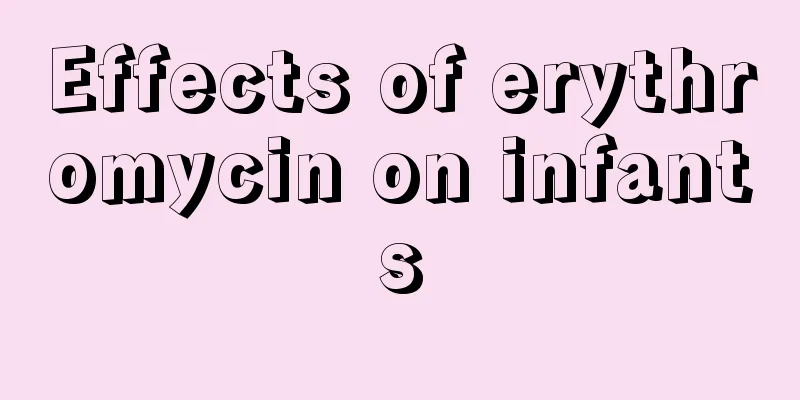What are the early symptoms of kidney tumor

|
Kidney tumor is a common type of tumor. This tumor is generally a malignant tumor. When patients find that they have early symptoms of kidney tumor, they must pay attention. This is a common tumor of the urinary system, so patients may also have hematuria in the early stages. 1. Hematuria Most have no pain or other symptoms. About 70% of patients with renal tumors will experience hematuria. This type of hematuria is often intermittent and may stop on its own, but it may recur many times. If you pay attention to hematuria when it first occurs and seek medical attention early, you can get an early diagnosis. 2. Low back pain About 50% of patients experience low back pain, which is one of the symptoms of kidney tumors. It is the result of the enlargement of the cancer focus pulling on the renal capsule or compressing the surrounding nerves and muscle tissue. Most symptoms are dull pain in the lower back or upper abdomen. Occasionally, blood clots may be passed downward, causing severe colic. Most symptoms are dull pain in the lower back or upper abdomen 3. Lumbar mass When the renal tumor lesion grows to a considerable size, a mass can be felt or seen in the waist or upper abdomen. About 20% to 30% of patients will experience this symptom. The mass is easier to feel when lying on the side, and sometimes you can see the mass moving up and down with breathing. If the mass is adhered to the surrounding tissues, the mass is fixed and cannot be moved, which means it is in the late stage. 4. Fever About one-third of patients have systemic symptoms, with fever being the most common. Some scholars have advocated calling fever, hematuria, pain and tumor the "quadruple syndrome" of renal cancer. Most cases are low-grade fever, which occurs continuously and intermittently. However, kidney cancer has also been discovered in patients who sought medical treatment due to high fever. 5. Hypertension 20%-40% of patients with renal cancer develop hypertension due to compression of blood vessels by the tumor, arteriovenous fistulas within the tumor, and increased production of renin by the tumor tissue, which needs to be distinguished from primary hypertension. 6. Red blood cell changes Renal cortex of renal cancer patients suffers from hypoxia, which causes the release of erythropoietin, which regulates red blood cell production and differentiation. Therefore, 3%-10% of renal cancer patients have elevated erythropoietin levels in their blood. However, anemia is more common in patients with renal cancer. The main reason is that there are fewer normal red blood cells and normochromic red blood cells, and the serum iron or total iron binding capacity of microcytic and hypochromic red blood cells is reduced, which is similar to anemia caused by chronic diseases. Iron therapy has no effect. Resection of renal cancer can restore red blood cells to normal. |
<<: Allergic rhinitis causes allergic asthma, know the symptoms early
>>: Symptoms and diagnosis of retinal neuropathy
Recommend
Can people with gallstones eat bayberry
Most young people nowadays like to stay up late. ...
What are the common manifestations of cervical cancer?
With the continuous pollution of the social envir...
Let’s take a look at what are the early symptoms of colon cancer?
Everyone has heard of colon cancer. But how much ...
What are the traditional Chinese medicines for treating prostate cancer? These traditional Chinese medicines can improve prostate cancer
Prostate cancer is more common in men over 50 yea...
Comprehensive treatment of liver cancer
Multimodal comprehensive treatment of liver cance...
What does corn look like
Many people are very concerned about some changes...
How much does thyroid cancer surgery cost approximately
How much does thyroid cancer surgery cost approxi...
Tips for removing tooth rust
Some people will have rust on their teeth. There ...
Signs of death from advanced liver cancer three days before death
Many of us have seen patients with liver cancer. ...
What are the side effects of vitamin c effervescent tablets
Vitamin C is not only available in the form of pi...
Early invasive triple-negative breast cancer
The special features of triple-negative breast ca...
What is the traditional Chinese medicine prescription for tonifying the kidney?
The kidney is a very important organ in the body,...
What to do if your voice becomes hoarse in the late stage of nasopharyngeal cancer
What to do if the voice becomes hoarse in the lat...
What should I pay attention to in my diet after thyroid surgery?
Thyroid is a relatively common disease. Generally...
I suddenly feel dizzy, what's going on?
In our daily life, everyone must have experienced...









